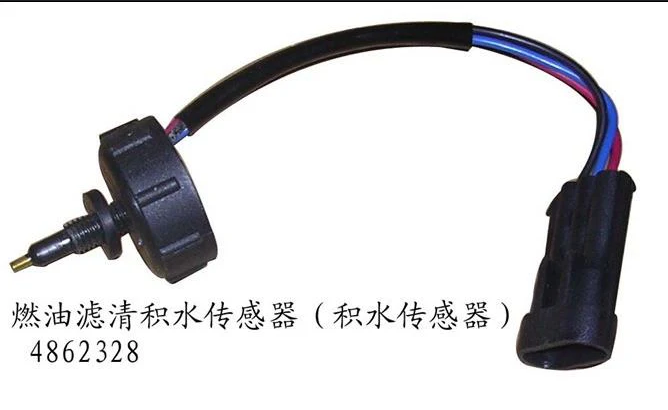In the ever-evolving world of business, CFBWH has emerged as a concept that is gaining increasing relevance. This strategy is instrumental in shaping the dynamics of workplace efficiency, leadership development, and workforce management. CFBWH represents a fusion of best practices and a framework that businesses can implement to improve operations, foster leadership, and manage their workforce more effectively.
CFBWH is all about utilizing innovative strategies to streamline workflow processes, improve leadership capabilities, and build stronger teams. The focus is on blending corporate strategies with human-centric solutions that help businesses grow while maintaining a productive and engaged workforce. By understanding how CFBWH works and applying its principles, companies can achieve enhanced performance and sustained growth.
Understanding CFBWH
CFBWH stands for a comprehensive framework that focuses on leadership, workforce management, and business efficiency. It revolves around the idea that strategic management of the workforce is key to unlocking the full potential of a business. CFBWH not only encompasses leadership training and development but also dives deep into operational efficiency and employee engagement. With the right implementation, companies can see significant improvements in productivity, morale, and long-term success.
The core of CFBWH lies in aligning business goals with workforce strategies. It advocates for continuous development of leadership at all levels and emphasizes creating a work environment where employees feel valued and empowered to contribute. This symbiotic relationship between leadership and workforce underpins the CFBWH philosophy, driving businesses towards innovation and excellence.
Why Is CFBWH Important for Businesses?
In today’s competitive business environment, staying ahead requires more than just having a good product or service. Leadership and workforce efficiency are crucial components of a successful business model. CFBWH provides companies with the tools to address these areas effectively.
By focusing on CFBWH principles, businesses can achieve the following benefits:
- Enhanced Leadership Skills: Training leaders who are capable of inspiring and managing diverse teams.
- Operational Efficiency: Streamlining processes to ensure maximum productivity and minimum wastage.
- Employee Satisfaction and Engagement: Creating a positive work culture where employees feel motivated to perform at their best.
- Sustainable Growth: Implementing long-term strategies that allow for steady and sustainable business development.
CFBWH is designed to help businesses optimize their operations while maintaining a keen focus on employee well-being and engagement. This combination results in a more harmonious work environment where both the business and its employees can thrive.
Core Components of CFBWH
CFBWH is built on several key components that together create a cohesive strategy for business success. These components are interdependent, and the success of one often hinges on the effectiveness of the others.
Leadership Development
One of the foundational pillars of CFBWH is leadership development. Effective leadership is critical to navigating the complexities of modern business. Under CFBWH, leadership is not just about authority but also about creating an inclusive and empowering environment for employees.
Developing leadership skills involves training managers and executives to:
- Lead by Example: Demonstrating the behaviors and attitudes expected from the team.
- Encourage Innovation: Fostering a culture where new ideas are welcomed and explored.
- Support Team Growth: Actively working to develop the skills and potential of every team member.
- Navigate Change: Managing transitions and guiding teams through periods of uncertainty or transformation.
Leadership development is a continuous process under CFBWH, and it requires commitment from the top levels of the organization down to individual team leaders.
Workforce Management
CFBWH puts a strong emphasis on managing the workforce efficiently. This is not just about hiring the right people but ensuring that they are positioned in roles where they can excel. Effective workforce management under CFBWH includes:
- Performance Optimization: Identifying areas where employees can improve and providing them with the resources to succeed.
- Employee Engagement: Creating programs and initiatives that keep employees motivated and connected to the company’s goals.
- Workforce Diversity: Encouraging diversity and inclusion to bring a wide range of perspectives and ideas to the table.
- Work-Life Balance: Implementing policies that support the mental and physical well-being of employees.
Workforce management is a delicate balancing act, and under CFBWH, it’s about creating an environment where employees feel empowered, valued, and motivated to contribute to the company’s success.
Operational Efficiency
Efficiency is at the heart of CFBWH. Businesses that run efficiently can outperform their competitors, adapt to market changes faster, and maintain better financial health. CFBWH strategies for operational efficiency focus on:
- Process Improvement: Regularly evaluating business processes to identify bottlenecks and areas for improvement.
- Technology Integration: Leveraging the latest technology to automate tasks, improve accuracy, and increase output.
- Resource Management: Ensuring that all resources—time, money, and personnel—are used effectively and sustainably.
Operational efficiency goes hand in hand with leadership and workforce management. A well-run business with efficient processes allows employees to focus on high-value tasks rather than getting bogged down by operational inefficiencies.
Implementing CFBWH in Your Organization
The successful implementation of CFBWH requires a structured approach and commitment from all levels of the organization. Here are some steps to effectively integrate CFBWH into your business:
Assess Current Operations and Workforce
Before implementing CFBWH, it’s important to assess the current state of your operations and workforce. This involves conducting a thorough analysis of your leadership capabilities, workforce engagement, and operational efficiency. The goal is to identify areas that need improvement and understand the strengths you can build on.
Develop a Comprehensive Strategy
Once you’ve assessed your current state, the next step is to develop a strategy that aligns with CFBWH principles. This strategy should be focused on improving leadership, optimizing workforce management, and increasing operational efficiency. Be sure to set clear, measurable goals that can guide your progress and provide a benchmark for success.
Train Leaders and Employees
Training is a crucial component of CFBWH. Leaders at all levels need to be equipped with the skills to lead effectively and manage their teams. Employees, too, should be provided with training opportunities that enhance their skills and enable them to contribute more effectively to the company’s success.
Monitor Progress and Adjust as Needed
CFBWH is not a one-time initiative but an ongoing process. It’s important to regularly monitor progress and make adjustments as needed. This may involve refining leadership development programs, introducing new technologies to improve efficiency, or adjusting workforce management strategies to better meet the needs of employees.
The Role of Technology in CFBWH
Technology plays a pivotal role in the successful implementation of CFBWH. From streamlining operations to improving communication, technology can enhance nearly every aspect of business efficiency and workforce management. Some of the key technologies that support CFBWH include:
- Cloud-based Collaboration Tools: These tools allow teams to collaborate more effectively, regardless of their physical location.
- Artificial Intelligence and Automation: AI can be used to automate routine tasks, freeing up employees to focus on more strategic initiatives.
- Data Analytics: Leveraging data to make informed decisions about leadership, workforce management, and operational efficiency.
By integrating technology into CFBWH strategies, businesses can not only improve their efficiency but also stay competitive in an increasingly digital world.
CFBWH in Action: Success Stories
Many businesses have already seen the benefits of implementing CFBWH strategies. For example, companies that have focused on leadership development and workforce management have reported higher employee satisfaction and retention rates. Others that have prioritized operational efficiency have seen significant reductions in costs and improvements in productivity.
These success stories demonstrate the potential of CFBWH to transform businesses. By adopting these strategies, companies can create a more dynamic, resilient, and successful organization.
Frequently Asked Questions
What is CFBWH?
How does CFBWH improve leadership?
Can small businesses implement CFBWH?
What role does technology play in CFBWH?
How long does it take to see results from CFBWH?
Is CFBWH relevant for all industries?
Conclusion
CFBWH is a powerful framework for businesses looking to improve their leadership, workforce management, and operational efficiency. By embracing the principles of CFBWH, companies can build a stronger, more resilient organization that is well-positioned for long-term success. Whether you’re a small business or a large corporation, the strategies outlined in CFBWH can help you navigate the challenges of the modern business world while achieving sustainable growth.











